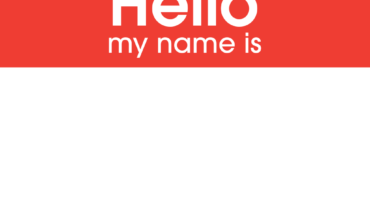Introducing Stable Renters
Nine finalists will present their ideas for new ventures at the We Media NYC conference on April 6, 2011. A panel of judges will select two winners – and each will receive $25,000 and access to a network of mentors to help them launch. Stable Renters is one of the finalists. To register for the conference, click here.
Stable Renters
Location: Stable Renters will start in New York City, and move to urban centers across the U.S.
Contact: Benjamin Sacks, Founder & CEO
Ben@StableRenters.com
www.stablerenters.com
 Ben Sacks – Founder & CEO
Ben Sacks – Founder & CEO
Since graduating from Hampshire College in 2007, I have worked at publically oriented, non-profit cultural institutions. I am currently a fundraiser for the Center for Jewish History in NYC, which houses one of the country’s most sophisticated bibliographic records management systems, disseminating records and digital images of more than 100 million documents. Every day, I work to broaden public access to valuable information in these holdings for users of all kinds, and to collate and curate them appropriately for use by a wider audience. Through Stable Renters, I have forged connections with tenant advocacy organizations and community-based non-profits throughout New York City, and have gained access to a web of allied groups in cities across the country.
![]() The idea – what is it?
The idea – what is it?
Stable Renters will assemble a profile and score for every rental property and owner based on a history of violations, lawsuits, pending charges, bedbugs, ceiling leaks and more. With a score for each property – and a separate score for each landlord and management company that is based on an average of the properties they run – renters will be empowered to make assertive decisions when seeking a home, allowing market forces of supply and demand to reduce the rent that delinquent owners are able to charge, and equalize the accountability mechanisms used on tenants and landlords.
What problem is it solving?
Today’s landlords are not held as accountable as their tenants, a problem illustrated by the punishments levied in response to delinquency. A tenant who is sued for violating a lease must fix the problem and most likely face eviction. Tenant-screening agencies then sell lists of these names going back 7 years to real estate brokers and landlords nationwide, making it difficult for once-evicted renters to find housing in the future.
While this longstanding mechanism weeds out bad tenants, there is little to shield well-meaning renters from the landlords with government-verified histories of delinquency. Landlords that are sued for violating a lease or housing code must fix the problem and incur a fine. But unlike a tenant’s eviction, a landlord’s fine is a punishment that stops upon payment. According to the NYC Citywide Taskforce on Housing Court, these fines are often waved and are rarely levied frequently or drastically enough to deter the repeat behavior of those landlords bent on gaming the system. The situation has allowed a financial incentive to fester that encourages landlords to refuse services if it saves them money. Because most tenants in housing court cannot afford attorneys, existing legal avenues that privilege those with professional representation are insufficient for protecting tenants from irresponsible landlords.
Government data about landlord behavior is collected and made public by several agencies in New York City. Similar data is available in San Francisco, Los Angeles and Seattle, and Stable Renters is working to secure its availability in other cities in the U.S. But because these are disparately connected data sources that rarely communicate amongst themselves, few renters take advantage of the opportunity to distinguish the good landlords from the bad, and use their power as a consumer the way they are able in other monetary transactions.
How is your idea a useful solution to the problem?
Stable Renters will bring all this data under one roof and compile a score that reflects a landlord’s quality of service. The tool will retrieve data on housing violations, harassment lawsuits, bed bugs, landlord identity and other issues from publicly accessible government databases and curate them in a map-based interface. Users will be able to search by address, landlord name or management company to see scores for each as well as the evidence these scores are based on. They may also post comments about their own experiences living in a particular location. If apartment-seekers see that a building is known to have bed bugs, or its landlord consistently denies its residents hot water, or its management company has a bad reputation, they are likely to choose another equally priced apartment with similar amenities.
Stable Renters will produce a printable report that details all the available data on a given address, or on the portfolio of a landlord or management company. The reports will mimic the look and purpose of credit reports that are often required of tenants during the rental process, and will offer renters the power of a legitimate document with professional branding that gives affirmation to their own experiences. Reports could be used in landlord-tenant disputes either in or out of court, and will generally act as the physical manifestation of the data seen online.
Users will be allowed to privately associate themselves with a particular address, post information and receive email updates detailing when and why their building’s score changes. Stable Renters will keep tenants up to date on their building’s conditions, alert them when ownership changes hands, and facilitate communication between users associated with the same address or landlord, allowing them to stay involved with organizing efforts in their own residence and in their landlord’s other properties.
Stable Renters scores will eliminate the financial incentive encouraging landlords to refuse necessary services, and bring market forces to the industry in a way never done before. Landlords will have to think twice before using the not uncommon tactic of locking tenants out of their rent regulated apartments in an effort to pressure them to permanently vacate the premises and allow the rent to rise. This and other infractions will affect their score and future ability to rent at the market price. For too long, landlord quality has been a missing factor in a renter’s choice of a home. Stable Renters will simply add this feature to the slew other thoughts in a renter’s decision. While Stable Renters will not make it easier for tenants to win housing court cases, it will give far more weight to the cases that do exist.
What’s the big innovation?
Stable Renters exemplifies a for-profit activism that responds accurately to a widespread problem in a way no existing tool does today. It is able to mimic the service model of a traditional tenant-screening agency while refining its revenue stream to avoid charging its primary consumers.
Stable Renters works to best-fit information for social profit, and is ahead of the curve in its vision to open up data for the public and maximize its value. While, plotting massive amounts of data on a map is no new invention, the use and synthesis of this data is unprecedented. The NYC BigApps Challenge offers money to engineers that develop software for the public good using specific government-generated datasets. But it did not include housing violations, complaints, or bedbugs as eligible possibilities.
Stable Renters also redefines the notion of a media outlet and may transform journalism in new ways. For too long, citizens would consult their favorite newspapers, TV channels, radio frequencies, and now these organizations’ websites, for information concerning pertinent issues of the day. Stable Renters empowers media consumers to conduct research themselves, serving as their own investigative reporters and sending the information on to neighbors and friends. In this sense, the journalistic trend of tailoring reporting to niche audiences and allowing them greater choice in the news they consume may reach ever higher levels with Stable Renters, which allows consumers to produce their own answers to the questions they ask on their own. The first newspapers began as scrolls transported between small communities that would each add their knowledge of current affairs to be passed on to the next. In an age in which technology has raised the quantity of news while sacrificing its quality, Stable Renters may serve as a model for technology to provide a helpful return to the basics.
And of course queries made to Stable Renters could form the basis of countless articles from traditional news organizations as well. Reporting on a real estate developer could go beyond mentioning the company’s name and citing previous articles for evidence of a history of wrongdoing. Indeed, Stable Renters will allow journalists to report that X agency has neglected the terms of 40% of its leases, has let 30% of its properties fester with infestations of insects, mold and rodents over the last decade, and appears to have raised the rent each year in spite of these persisting conditions. This will change the nature of reporting, adding to the stories produced by interviews with victims, officials and perpetrators, to provide evidence for why these injustices continue to occur.
Stable Renters is also a new style of website. The Internet has seen thousands of websites that allow users to post information that gradually increases their value as a public resource. Craigslist and Facebook are examples that rely entirely on their users for content. Yelp does too, and adds only minimal information such as each business’s contact information, failing to even integrate into each profile the health inspection ratings that must be displayed on the doors of New York’s restaurants. The opposite kind of website, destination sites, project information at visitors rather than accepting it from them. White Pages is a good example, as are hundreds of news outlets, some of which allow very limited, and often censored, commentary. But with all this mix of information flowing back and forth, rarely do we see a site that combines the qualitative user commentary of blogs, which Stable Renters will emphasize, with the quantitative statistics that Stable Renters prides itself on. Stable Renters will provide its users with valuable information they did not create on their own, while hosting a forum for each to participate in the dissemination of more. A two-way interactive model that combines host-generated data with user-generated experience is what the Internet 2.0 should really be about. It could revolutionize the way local, state and federal governments assess their constituents’ most pressing needs and gauge the effectiveness of their own operations. In reality, we all contribute to generating government data when we call a housing inspector or simply pay rent on time. Stable Renters brings this process forward a few decades into a new era of public information management. It is quite fitting, then, that the Great Recession brought on a rise of the nation’s rental market during a time of unprecedented movement towards open data practices by governments across the country.
How did you come up with the idea?
The impetus for Stable Renters was my own experience in the rental market. Searching for new housing in New York City in the summer of 2008, I was required to submit a credit report and to pay for an extensive background check by a real estate broker. When I asked to meet the landlord, who was the only other resident in the two-unit building, my request was denied on the ground that it was “highly irregular.”
At the time, I didn’t expect a simple meeting with the landlord to tell me how many violations had been placed on the property or whether he or she had been sued for harassment in the last 7 years. I just wanted to meet the person whose rules I would inevitably have to abide by, whose music I would no doubt hear, and whose personality I would have to navigate. In the end, I took the apartment. And my landlord’s overall sensibility combined with the gifts of fresh tomatoes and basil from the backyard garden make her the best landlord I could hope for. If I ever decide to leave, I will be faced with the dilemma of finding an apartment managed as responsibly as this one, already a deterrent to my departure.
In the conversation with the broker, I felt the inequality of the arrangement, and considered asking her for the landlord’s credit score. I felt it would be a (poetically) justified request and should be granted. After all, I didn’t want to move into a building that was likely to be foreclosed upon. But then I realized I wouldn’t know how to interpret the credit report; and even if I had known, it still wouldn’t assuage my fears of living in close quarters with a crazy person. Stable Renters responds to my own personal need. It provides the most basic information regarding legal actions taken against a landlord’s irresponsibility as well as the user experiences gained from living under their roof in a readable way for public citizens lacking any formal knowledge of tenant-landlord law.
Can you pull this off? What background, skills, network are you bringing to the project?
In my current position as Development Manager for Institutional Projects at the Center for Jewish History, my job is spilt between two areas. I am constantly selling new projects and ideas to potential funders, and have raised more than 20% of the institution’s operating budget in each of my 3 years of employment. I also work every day to tailor the style of collections access that we offer to the constantly changing needs of a diversifying public. This has included studying the feasibility of virtually recreating the largest Jewish library in Europe prior to the Holocaust y digitizing thousands of long-ignored book volumes, and making recommendations to improve the institution’s massively complex database in order to provide better usage statistics and a more accessible patron experience; both natural predecessors to my work with Stable Renters.
As a student at Hampshire College, I began a campaign to rebuild a popular community space that was to be demolished due to disrepair. The work included uniting disconnected and disinterested departments and inviting outside expertise to weigh in on the controversial subject, for which I received the College’s Ingenuity Award for bureaucratic navigation. In 2010, the project was finally approved, and a student-led $250,000 capital campaign was completed. Due to my role in this and other projects, I was recently accepted into StartingBloc’s New York Institute for Social Innovation, a life-long fellowship in creative leadership and entrepreneurial training.
In addition to my own qualifications, Stable Renters is currently working with Magnificent Fang, a web design team with expertise in digital curation, front-end development, branding, digital/viral marketing, illustration, graphic design, and photography. Among Magnificent Fang’s past works is a robust social network for Fountain House, an organization working with college-aged individuals suffering from a variety of mental illnesses.
What’s the current status – have you raised any funding, is there a prototype, have any partnerships, developers, designers or other team members been recruited?
Stable Renters is in the ideal stage to receive $25,000 in seed funding. With the help of Magnificent Fang, a beta site is currently in production and will be up and running by the end of May 2011. This will allow the site’s broad functionality to develop, will enable more accurate cost and revenue projections, and will position the project to take the next leap in soliciting additional funding, engaging clients to its API subscription and premium services, and expanding with a full scale marketing strategy.
Stable Renters has connected with several organizations – Tenants and Neighbors, Right to the City, and Chhaya Community Development Corporation – that have shown support for the site and signaled they would recommend it to their patrons. Staff members of NYU’s Furman Center on Real Estate and Urban Policy have expressed interest in Stable Renters advanced premium services as described in the revenue section.
Along with the money from the We Media Pitchit Challenge, already committed funds will cover back-end web development, legal fees, and web/server hosting, bringing the beta site to its fully functional level and enabling the project to solicit more substantial investment.
The Stable Renters Advisory Board consists of the following members:
Emily Baillieul, Director of Online Marketing at Goby Technologies
Katie Goldstein, Coordinator of Outreach and Leadership Development at Tenants & Neighbors, a tenant-organizing center in New York State
Michael Horn, Of Counsel at Buhler Duggal Henry & Pak LLP, a boutique law firm handling emerging businesses and startups
Justin Kang, Regional Director at the Unreasonable Institute, an international accelerator and investor in high-impact entrepreneurs
Jasmine Stine, Analyst at Accelerating Possibilities, an angel investment community
How will it earn money/be sustained?
Stable Renters will be sustained through a variety of revenue sources:
• Advertisements will appear on the destination site;
• Localized advertisements will be imbedded in email updates sent to users interested in the changing score and conditions of a particular address;
• A section will host advertisements for apartment rentals made by landlords, real estate brokers and other supporting entities;
• A subscription-based API will sell the site’s functionality to other rental advertising hubs; and
• A Premium version of the site will allow greater back-end manipulation for journalists and urban researchers seeking broader housing statistics on a particular geographic environment
Market overview, competitive analysis
According to the American Community Survey, nearly 900,000 people found new housing in New York City in 2009, or about 11% of the city’s population. Most of New York City’s residents either rent from a landlord or live in a building with a management company tasked with maintaining the building’s condition. All of these people are possible patrons for Stable Renters, whether as users of the destination site when considering a new home, or by receiving email updates on the conditions of their building and its score.
No tool exists that tells renters about the experience they might have living under a landlord and in their apartment. Other sites described below offer landlords and brokers a place to advertise apartment rentals. One aim of Stable Renters will be to emerge as a magnet for their advertisers, who will follow the renting public as it learns the benefit of knowing an apartment’s score.
While government databases currently provide the public with the information Stable Renters will disseminate, they do not present a competitive threat. Their data is spread thinly across several sources with no central clearinghouse to aggregate it. These websites are not user-friendly, and often provide loads of information that is typically meaningless to the average citizen, such as the census tract that a building stands on, or the city’s “internal classification” system, which marks Class O as “heretofore erected existing class b” (don’t ask what that means).
Other proprietary sites are easier to comprehend, but either target brokers and developers (www.propertyshark.com) with an area’s sales history and resale value – less than helpful for renters – or they target the bulk of renters (www.streeteasy.com) with little more than apartment listings that have yet to move beyond the number of bedrooms and bathrooms in each apartment’s profile. This does not help for tackling the behavior of landlords themselves, and will make it easier for Stable Renters to compete with by providing added benefit.
The NYC Public Advocate’s office created a site that shows some basic data about the worst kept 350 or so properties in the city. But his service doesn’t help the majority of renters. Those who live in these buildings are well aware of at least some of the problems (as they have complained hundreds of times to the city), and the rest of New Yorkers would pay far more attention if the list broadened its scope to include their (all of New York City’s) addresses too. Hence, in its effort to publicize the actions of only the city’s worst landlords, the Public Advocate’s office has rendered the site useless to most of its residents. Moreover, due to the local nature of New York City government, this site is unlikely to move beyond the city limits and into urban centers across the country that also provide this data.
Renters need tools tailored specifically to their needs. They need a simple yet powerful system that can handle lots of data and can show both buildings they should like, and others to stay away from. Stable Renters will be a well-curated and flashy tool enabling dummies and techies alike to judge the accountability of every landlord in the city.
No form of social network exists that connects rental communities for organizing purposes. Keeping tenants engaged with their building politics is an easy thing to do with a small amount of information, and is a highly effective tool for organizing within a building. Most tenants won’t check government databases for new violations, complaints, inspections, and charges, as well as changes in ownership, management, and zoning, all of which affect them directly. But with updates and alerts about these issues, tenants will not only become more knowledgeable about their own living conditions, but may increase the communication they have with their neighbors, unifying around their own well-being within their buildings, and educating their communities affected nearby.
If you win the challenge, how will you use the $25,000 to help you go further?
Stable Renters will devote this money towards full-scale development, legal fees and server space. By the time Stable Renters has spent this and the additional money raised as a result of the award, the project will be up and running, receiving its first revenue dollars, and will be in an adequate position to raise further investment.
Stable Renters is in the ideal position to accomplish exactly what $25,000 in seed funding is designed to do: get to the next level.



